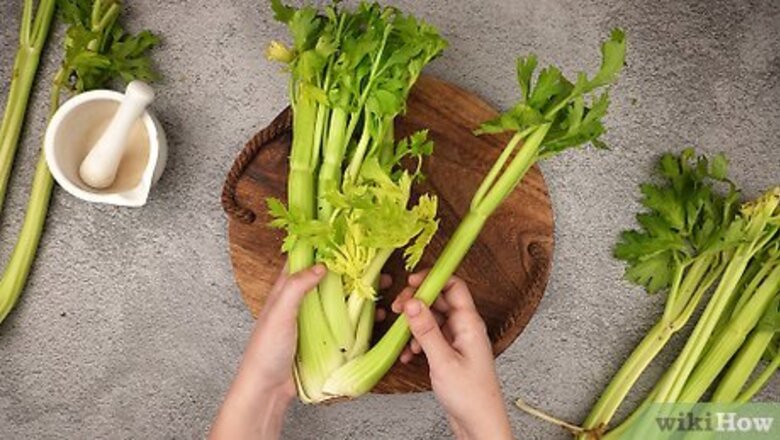
views
Separate the celery ribs.
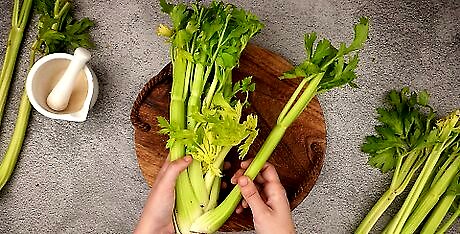
Grab a rib from the stalk and gently pull it from the bottom until it snaps off. Keep pulling ribs or pieces of celery from the stalk until all the celery pieces are separated. This will make cutting them evenly easier. A “stalk” refers to the bunch or head of celery, whereas a “rib” refers to a single piece or stick of celery.
Wash the celery ribs and leaves.
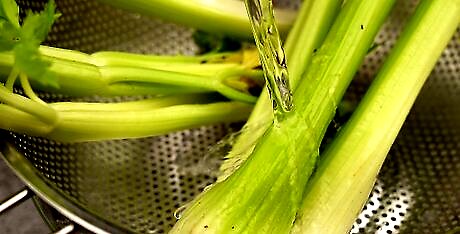
Rub a celery rib under cold water between your fingers. Use a back and forth motion to scrub along and inside the ridge of the rib. Massage the leaves between your fingers to remove any grime. There should be no dirt or grit on your celery piece.
Trim the ends and tips of the celery.
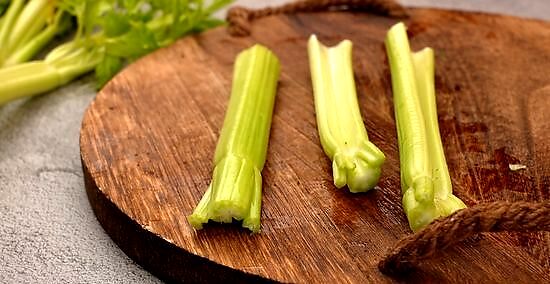
Use a sharp knife to remove the white base and leaves. Set the celery on a cutting board or table and cut off the pieces you don’t want to cook with. The base of a celery rib is usually larger, whiter in color, and more bitter, making it not ideal for everyday dishes. The leaves of a celery stalk can be diced up and set aside to use as a seasoning herb later. Save the ends and tips of celery as these leftover pieces can be tossed in a freezer bag or container to make vegetable stock later.
Peel the celery to remove coarse outer strings.

Take a vegetable peeler to remove strings and blemishes from the celery ribs. This step is optional, but some cooks prefer getting rid of the celery's coarse strings, as it makes the celery more tender and easier to eat. Start at the top of the celery piece and work your way down using controlled, smooth motions. Only take off the outer darker green layer of string.
Split the celery into long sticks for a snack.
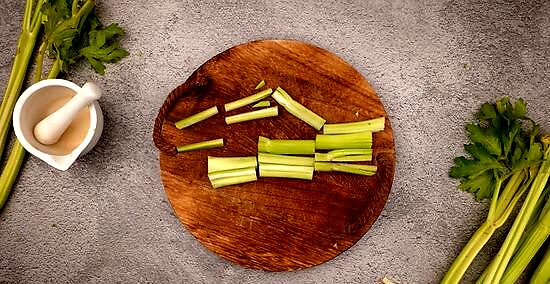
Slice each celery piece down the middle lengthwise for a dippable snack. Basically, create long stick-like pieces you can scoop or hold with one hand. If you have a longer rib, consider chopping it in half or 1 to 2 inches (2.5 to 5.1 cm) pieces, so they’re easier to store and hold. Skip the lengthwise cut, leaving the celery in its half-moon form, to make ants on a log. The large divot in the celery creates the perfect cavity for peanut butter. Celery sticks are great for veggie trays or dipping into hummus or ranch dressing.
Cut the celery into thin slices for salads or sautées.
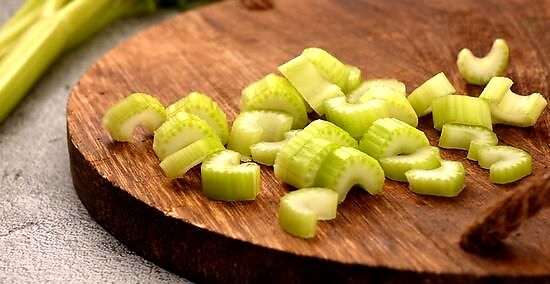
Chop the celery into ⁄4 inch (0.64 cm) thick pieces that resemble half-moons. This is a dicing technique and is the most common way cooks cut celery. Hold the celery rib with one hand, placing a sharp knife at the end with another. Use back and forth motions to cut through the celery, keeping a firm hold on the rib. Continue cutting until you reach the end of the celery piece. Try to keep your cuts uniform, especially if you’re cutting celery for a mirepoix or sautée, as this will help everything cook evenly.
Create thin celery slices to use in soups and salads.

Julienne the celery in even strips around ⁄8 inch (0.32 cm) thick. Place the rib upside down, so the two edges are on the table or cutting board. Slice the celery lengthwise with a sharp knife until you reach the other end. These small, sliced cuts will resemble batons or tiny sticks. The more cuts you make, the thinner your julienned celery will be. Try this cutting technique when you want to add a bit of crunch to a Cobb salad or vegetable soup.
Dice the celery for soups, sautées, and mirepoixes.
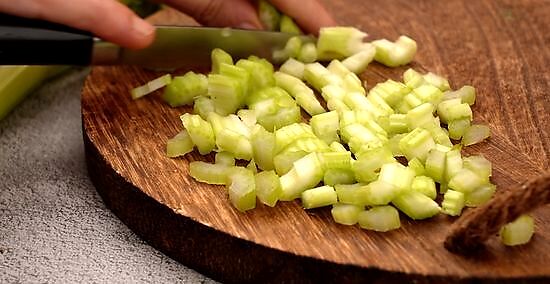
Bunch long ⁄2 inch (1.3 cm) sticks of celery together to chop finely. Group the celery pieces together, holding them in place with one hand while the other holds the knife. Use a rocking motion to dice the celery into the desired size. Stack the long celery sticks on top of each other to dice more at once. Let the knife do the work as you cut. The knife should move smoothly through the celery with ease. Keep your dice cuts uniform or the same size, so the celery cooks evenly. Give this cutting method a try when cooking celery in a stir fry, soup base, or rice dish.




















Comments
0 comment